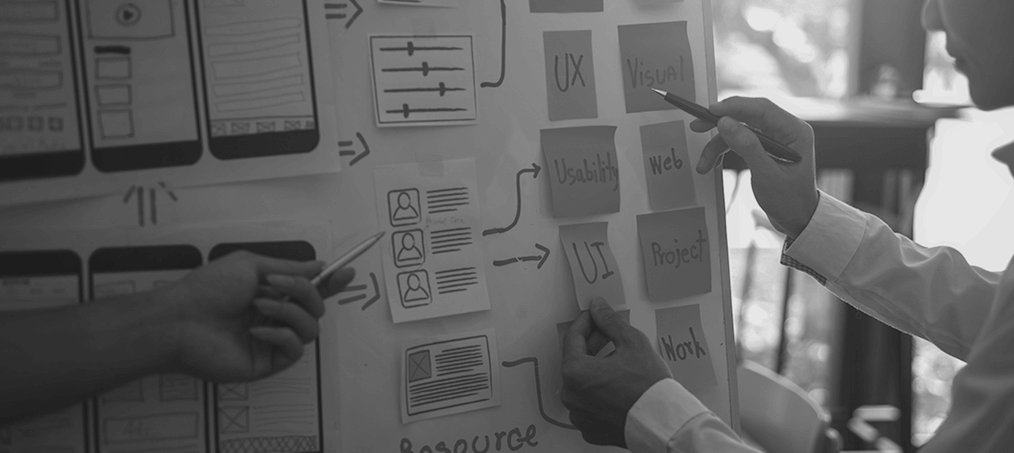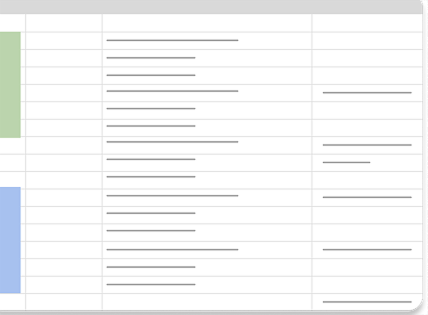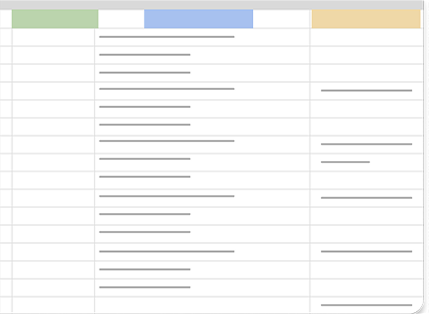An Unosquare Guide
8 Key Steps to Design Your New Software
New product launch or modernization of an existing one?
Get a systematic approach to digital product development.
Introduction to the Design Process
When you need to launch a new software product or modernize an outdated system it can quickly feel overwhelming.
At unosquare, we’ve distilled years of experience into our systematic approach to digital product development.
Our proven eight-step framework combines strategic groundwork and rapid prototyping to help you move confidently from idea to execution.
Need a boost? Talk to us about our Design and AI Rapid Prototyping teams.
Learn more at unosquare.com

Determining your Goals & Strategy
Before diving into UX design, it’s essential to lay a strong foundation by clearly defining your goals – and, if possible, conducting some market research.
Start with your goals: What are you aiming to achieve with your software? What problems are you solving? What unique value will you deliver to your customers? Make sure your goals are specific, measurable, achievable, relevant, and time-bound (SMART).
If you haven’t already explored the market, now’s the time.
Ask: Who are your potential users? What are their biggest pain points and unmet needs? What are they expecting from a solution like yours – and what are your competitors already providing?
Use surveys, focus groups, and online research tools to gather these insights and inform your strategy.
Our 8 Step Process
This proven framework guides our clients from early discovery through to product delivery, helping ensure every decision is rooted in strategy and user insight.
Market leaders create their experiences methodically.
Use this guide to help you make the most of your investment.


1. Create User Personas
Using your market research, create user personas that accurately represent the needs, goals, and behaviors of your target audience.
At unosquare, we take a data-driven approach, blending user research, market analysis, and key insights grounded in real-world observations. Our process is informed by the latest UX best practices, ensuring that every persona we create is relevant, actionable, and tailored to drive your product’s success.
2. User Journey Map
Next, we create a user journey map by analyzing data on user behaviors, needs, and experiences. Key elements include user personas, touchpoints, tasks, emotions, pain points, and opportunities.
This helps identify areas to enhance the user experience and drive satisfaction. If you need assistance, our UX team can craft a data-driven map to optimize your digital solution’s core experience.


3. Work Area Analysis
At this stage, unosquare conducts a thorough work area analysis to identify the core areas that require focused effort to successfully deliver your product. Think of this as defining the essential deliverables for UX design – much like planning the specific needs and goals of each room in a house.
For instance, if the kitchen is a key area, what are the goals and requirements for that space? The aim is to design these work areas to be as efficient and purposeful as possible, ensuring every part of your project is optimized for success.
4. User Scenarios
Identify user scenarios for each core work area, keeping in mind their goals, needs, and tasks. Don’t forget to account for the touchpoints where users interact with your product.
By focusing on the core user experiences that are essential for your project’s success, you ensure that the most impactful interactions are optimized. If you need assistance, reach out to us.


5. View Catalog and Audit
For each core work area, we identify the key views necessary to complete the user scenarios. We then conduct a thorough audit to pinpoint which views are core and reusable.
This process includes a content inventory, user flow mapping, heuristic evaluation, and metrics analysis. By identifying and auditing these essential views, we can prioritize resources for the most critical ones, ultimately creating a more efficient, user-friendly product.
6. Guiding UX Design Strategies
Next, we’ll define guiding UX design strategies that prioritize user needs and expectations, ensuring the product is intuitive, efficient, and enjoyable.
These principles provide a framework for the design process and align the development team with both user and business objectives. For example, simplicity: designing for clarity to reduce cognitive load and improve usability.


7. Design Concept
Next, it’s time to create a design concept. This high-level vision sets the overall direction and approach for your design project.
Built upon the research and insights gathered during the discovery phase, the design concept serves as the foundation for the entire design process. It encompasses key elements such as branding, user experience, visual design, and functionality, ensuring that every design decision aligns with your project’s goals and objectives.
8. Implementation and Agile Work Plan
Once Step 7 is complete and we have a finalized design concept, we create an agile work plan.
This plan outlines the UX design, UI engineering, and back-end engineering activities, along with the necessary resources, timeline, and investment required to bring your product to life. It also details the specific types of resources you’ll need to ensure successful execution.

Still feeling overwhelming and complex?
Follow these steps to create a truly effective and efficient digital solution.
Learn more at unosquare.com